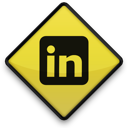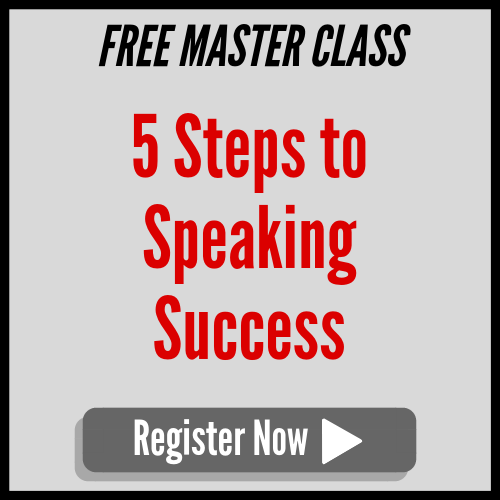
Have you ever wondered why your prospects DON’T buy from you? Especially when you can see as plain as the nose on their face that they DESPERATELY need what you do and could benefit from it HUGELY?
Well… as with most marketing - it’s not about YOU.
It’s about THEM.
And your prospects are not actually idiots - but IDIOTS is a good acronym for the six biggest reasons that your prospects DON’T buy.
I’ve done a lot of thinking about this because MANY of my 1-on-1 marketing coaching clients experience precisely this problem when we begin working together.
And solving it for them immediately puts money in their pocket. Just like it will for YOU.
Here are the six parts of the IDIOTS acronym:
- Ignorant of their problem
- Denial of their situation
- Indifferent to your brand
- Overwhelmed with choices
- Terrified of making a mistake
- Suspicious of marketers/salespeople
Let’s unpack these one at a time. And you’ll also get specific ideas for what to DO to punch through each of these six obstacles and close more sales - better sales - faster sales.
1. Ignorant of their problem. They “don’t know what they don’t know” about what’s wrong, missing, broken, too slow, too inefficient. And you can’t sell someone on the fact that they have a problem. Never works. Just pisses ‘em off.
What to DO: Use the following language: “Is This You?” and then cleanly and crisply articulate their pains, problems, heartaches, headaches, challenges, and gaps in language that they will instantly recognize - because you’re entering the conversation that’s already happening in their head every single day.
2. Denial of their situation. “Me? Problem? No, no, no - that’s impossible.” This is actually a WORSE problem than mere ignorance. It’s awareness plus a determination to avoid, deny or minimize the problem. This is also commonly referred to as the “head in the sand” syndrome.
What to DO: Call out the elephant in the room (the denial) and skillfully weave in stories of other people in similar situations who emerged from their denial, made some tough choices, and came out victorious in the end. In order to avoid insulting them, use language such as, “Many folks in your situation prefer to address the surface issues rather than deal with the problem head-on. That makes perfect sense because this can be messy, expensive, and painful. Using our [product/service/whatever you’re selling], our clients find that it’s not nearly as bad as they feared - and once it’s done, everything gets better in the areas of X, Y. and Z."
3. Indifferent to your brand. “Who are you again? And from what company?” Early in my entrepreneurial career as a marketing speaker and marketing coach, I called on a client and we had a very cordial 20-minute meeting. He seemed ready to move ahead. Until he thought to ask me this question, “If you’re so good, how come I’ve never heard of you before?” OUCH! 12 years ago I didn’t have a good answer. (Today, I would take a copy of my book from my briefcase and slap him upside the head with it before leaving an autographed copy on his desk and seeing myself out.)
What to DO: Buyers don’t buy you, your product, your service, or your brand sight unseen. So the answer is easy: GET SEEN! Use 3PR strategies to maximize your influence and impact in the right places in front of the right prospects for the right reasons. Keep showing up as a person (and company) “of value” and soon, they’ll be coming to YOU, not vice versa.
4. Overwhelmed with choices. Your buyers are lazy, busy, and befuddled. I don’t need to convince you any further of that, do I?
What to DO: Market to the LAZY - What can you OFFER that’s easy, fast, and free? Market to the BUSY - What can you DO to be heard above the noise? Market to the BEFUDDLED - What can you SAY that will immediately resonate with your best prospects because it shows that you “get” them?
5. Terrified of making a mistake. Yup - your buyers are risk-averse. Scaredy cats, in fact. As they should be because they’ve probably been burned by people who looked a lot like YOU in the not-too-distant past. What should you offer them? Guarantees, success stories, testimonials, and proof.
What to DO: Show them specific names, specific companies, and indisputable points of proof that you have a strong, clear and compelling track record of making those people happy. Let's face it - one BIG reason people don't want to buy is because they're putting their own relational capital (aka reputation) on the line. And that's risky. If you can remove the risk of the sale, you will open the floodgates to getting more and better clients for life. Hint: They won't believe YOU. They WILL believe your clients, references, referrals, and people who have given you money in the past and been thrilled to do so. Print up a sheet called "Client Success Stories." Put in 5-7 specific success stories with the right names to drop and the right stories to tell. Bingo! Instant sales breakthrough.
6. Suspicious of marketers/salespeople. Yes, of course they are. And you are, too. Salespeople and marketers have a long-standing (and sometimes accurate) reputation as liars, shysters, slimeballs, and fraudsters. That’s the stereotype you’re up against no matter how expensive your suit, how specialized your services, or how sincere your approach.
What to DO: Position yourself not as a salesperson OR a marketer. Position yourself as an expert - a thought-leader - a trusted advisor. In my marketing keynotes and seminars, I show a slide that has this text in a giant 288-point font: VALUE + TIME = TRUST. That’s the key. Deliver value - relevant insights, resources, advice, recommendations. Do this over time and become known as a person of value - and a company of value - and then over time, your prospects will begin to seek you out and you’ll be positioned as the obvious go-to choice for what you’re offering.
That’s the antidote to prospect IDIOTS who don’t buy from you. (Again, no offense - remember, it’s an acronym!)
Want to apply for your Speaker Strategy Call to see how you can IMPLEMENT some of these concepts right away? Apply for your call here.
 Outrageousness works. If, you have the guts. And if you’re an entrepreneurs, we know you have guts, so why are you afraid to let your story out?
Outrageousness works. If, you have the guts. And if you’re an entrepreneurs, we know you have guts, so why are you afraid to let your story out?



 Entrepreneurs who START a business typically exhibit these traits:
Entrepreneurs who START a business typically exhibit these traits:

 For a very long time, you couldn’t sit through any marketing seminar or sales training without some moron blathering on about the radio station WIIFM - “What’s In It For Me?” as if this was cutting edge information that you had never heard before.
For a very long time, you couldn’t sit through any marketing seminar or sales training without some moron blathering on about the radio station WIIFM - “What’s In It For Me?” as if this was cutting edge information that you had never heard before. Be more courageous.
Be more courageous.
 Like you, I get a lot of offers every day.
Like you, I get a lot of offers every day. There's a nice group of folks coming together for the next
There's a nice group of folks coming together for the next  How to unlock, unblock, and unleash LinkedIn Groups...
How to unlock, unblock, and unleash LinkedIn Groups...